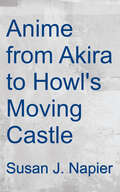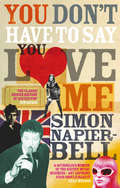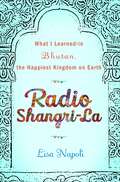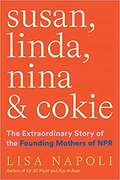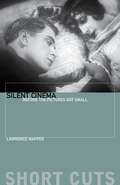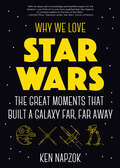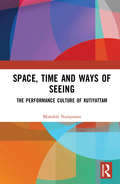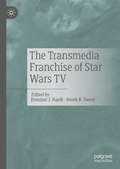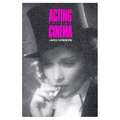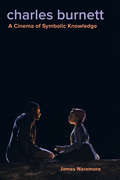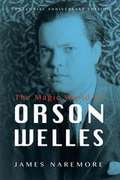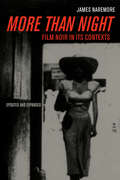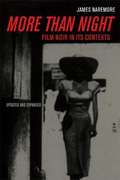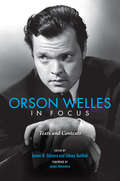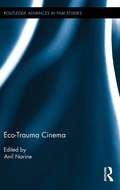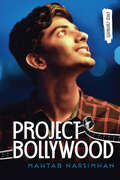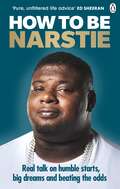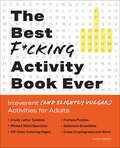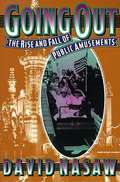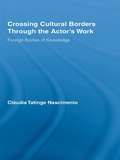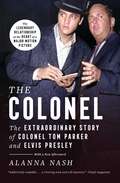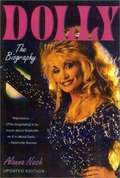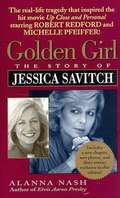- Table View
- List View
Anime from Akira to Howl's Moving Castle: Experiencing Contemporary Japanese Animation
by Susan J. NapierJapanese animation is more popular than ever following the 2002 Academy Award given to Hayao Miyazaki's Spirited Away. It confirmed that anime is more than just children's cartoons, often portraying important social and cultural themes. With new chapters on Spirited Away and other recent releases, including Howl's Moving Castle-- which broke records in Japan--this edition will be the authoritative source on anime for an exploding market of viewers who want to know more.
You Don't Have To Say You Love Me
by Simon Napier-BellYou probably know Simon Napier-Bell as the manager of the Yardbirds. Or you may know him as the man who managed Marc Bolan, or Japan. You should definitely know him as the man who managed Wham! And if none of these rings a bell, maybe you'll remember him as the man who co-wrote 'You Don't Have To Say You Love Me' for Dusty Springfield. You Don't Have To Say You Love Me is one of the funniest books you will read and equally provoking. From his revelation that the entire music industry was motivated by sex, to an embarrassing come-on from a suicidal Brian Epstein, it's all shocking stuff. But when you're on the run from the German police with Marc Bolan, brothel-hopping with Keith Moon and generally living the life of Riley at the music industry's expense, it would be a shame not to share those amazing experiences with the rest of the world, wouldn't it? Of all the great pop-music books written, it is worth savouring You Don't Have To Say You Love Me for its brilliant sideways insight into one of the most exciting cultural periods Britain has ever seen.
Radio Shangri-La: What I Discovered on my Accidental Journey to the Happiest Kingdom on Earth
by Lisa NapoliLisa Napoli was in the grip of a crisis, dissatisfied with her life and her work as a radio journalist. When a chance encounter with a handsome stranger presented her with an opportunity to move halfway around the world, Lisa left behind cosmopolitan Los Angeles for a new adventure in the ancient Himalayan kingdom of Bhutan--said to be one of the happiest places on earth. Long isolated from industrialization and just beginning to open its doors to the modern world, Bhutan is a deeply spiritual place, devoted to environmental conservation and committed to the happiness of its people--in fact, Bhutan measures its success in Gross National Happiness rather than in GNP. In a country without a single traffic light, its citizens are believed to be among the most content in the world. To Lisa, it seemed to be a place that offered the opposite of her fast-paced life in the United States, where the noisy din of sound-bite news and cell phones dominate our days, and meaningful conversation is a rare commodity; where everyone is plugged in digitally, yet rarely connects with the people around them. Thousands of miles away from everything and everyone she knows, Lisa creates a new community for herself. As she helps to start Bhutan's first youth-oriented radio station, Kuzoo FM, she must come to terms with her conflicting feelings about the impact of the medium on a country that had been shielded from its effects. Immersing herself in Bhutan's rapidly changing culture, Lisa realizes that her own perspective on life is changing as well--and that she is discovering the sense of purpose and joy that she has been yearning for. In this smart, heartfelt, and beautifully written book, sure to please fans of transporting travel narratives and personal memoirs alike, Lisa Napoli discovers that the world is a beautiful and complicated place--and comes to appreciate her life for the adventure it is.From the Hardcover edition.
Susan, Linda, Nina, And Cokie: The Extraordinary Story Of The Founding Mothers Of NPR
by Lisa NapoliIn the years after the Civil Rights Act of 1964, women in the workplace still found themselves relegated to secretarial positions or locked out of jobs entirely. This was especially true in the news business, a backwater of male chauvinism where a woman might be lucky to get a foothold on the “women’s pages.” But when a pioneering nonprofit called National Public Radio came along in the 1970s, and the door to serious journalism opened a crack, four remarkable women came along and blew it off the hinges. Susan, Linda, Nina, and Cokie is journalist Lisa Napoli’s captivating account of these four women, their deep and enduring friendships, and the trail they blazed to becoming icons. They had radically different stories. Cokie Roberts was born into a political dynasty, roamed the halls of Congress as a child, and felt a tug toward public service. Susan Stamberg, who had lived in India with her husband who worked for the State Department, was the first woman to anchor a nightly news program and pressed for accommodations to balance work and home life. Linda Wertheimer, the daughter of shopkeepers in New Mexico, fought her way to a scholarship and a spot on-air. And Nina Totenberg, the network's legal affairs correspondent, invented a new way to cover the Supreme Court. Based on extensive interviews and calling on the author’s deep connections in news and public radio, Susan, Linda, Nina, and Cokie will be as beguiling and sharp as its formidable subjects.
Silent Cinema: Before the Pictures Got Small (Short Cuts)
by Lawrence NapperSince the spectacular success of The Artist (2011) there has been a resurgence of interest in silent cinema, and particularly in the lush and passionate screen dramas of the 1920s. This book offers an introduction to the cinema of this extraordinary period, outlining the development of the form between the end of the First World War and the introduction of synchronized sound at the end of the 1920s. Lawrence Napper addresses the relationship between film aesthetics and the industrial and political contexts of film production through a series of case studies of "national" cinemas. It also focuses on film-going as the most popular leisure activity of the age. Topics such as the star system, cinema buildings, musical accompaniments, film fashions, and fan cultures are addressed—all the elements that ensured that the experience of the pictures was "big." The international dominance of Hollywood is outlined, as are the different responses to that dominance in Britain, Germany, and the USSR. Case studies seek to move beyond the familiar silent canon, and include The Oyster Princess (1919), It (1927), Shooting Stars (1927), and The Girl with the Hatbox (1927).
Why We Love Star Wars: The Great Moments That Built a Galaxy Far, Far Away
by Ken NapzokCelebrate the greatest saga ever told with this “intergalactically awesome book” (Tiffany “Smithlord” Smith).The first shots of the ragtag Rebels running from the monstrous Galactic Empire. Young Anakin winning the podrace. The first time we saw the crackle of Luke Skywalker’s lightsaber. All of us who are deeply influenced by the epic saga of Star Wars have our favorite moments, and each time the screen goes black and we see those words—A Long Time Ago, In A Galaxy Far, Far Away—the music blasts through us and we feel like kids again.In this book, Star Wars aficionado Ken Napzok counts down one hundred of those special moments that makes this series not just the best movies of all time, but the Greatest Saga Ever Told. What began as one movie about good people, evil oppressors, and the space wizards that stood between them has exploded into so much more. The moments that continue to inspire are on screen and in the pages of novels. They are found in the panels of comic books and among animated sequences on television. And they all continue to grow in stature, importance, and myth through discussions, debates, and daydreams. Why We Love Star Wars is a joyful journey through the universe we love to inhabit, again and again.
Space, Time and Ways of Seeing: The Performance Culture of Kutiyattam
by Mundoli NarayananThis volume explores the constitutive role played by space in the performance of Kutiyattam. The only surviving form of Sanskrit theatre, Kutiyattam is distinctive in terms of its performance conventions and its unique culture of extensive elaboration and interpretation. Drawing upon the concepts of phenomenology on the processes of perception, particularly on the works of Edmund Husserl, Martin Heidegger and Maurice Merleau-Ponty, it analyses the role of space in the communicative structures of performance of Kutiyattam and its contribution to the production of meaning in theatre, especially in the context of contemporary theatre. The book explores the theatrical event as a phenomenon that comes into existence through a triangular relationship among the ‘ways of being’ of the performers, the ‘ways of seeing’ of the audience, and the space which brings them together. Based on this formulation, Kutiyattam is approached as a ‘theatre of elaboration,’ made possible by the ‘intimate,’ ‘proximal’ ways of seeing of the audience, in the particular theatrical space of the kūttampalaṃs, the temple theatres, where Kutiyattam has customarily been performed for more than five centuries. This volume will be of great interest to scholars and researchers of cultural studies, theatre and performance studies, cultural anthropology, phenomenology and South Asian studies.
The Transmedia Franchise of Star Wars TV
by Dominic J. Nardi Derek R. SweetWhile previous work on the Star Wars universe charts the Campbellian mythic arcs, political representations, and fan reactions associated with the films, this volume takes a transmedial approach to the material, recognizing that Star Wars TV projects interact with and relate to other Star Wars texts. The chapters in this volume take as a basic premise that the televisual entrants into the Star Wars transmedia storyworld are both important texts in the history of popular culture and also key to understanding how the Star Wars franchise—and, thus, industry-wide transmedia storytelling strategies—developed. The book expands previous work to consider television studies and sharp cultural criticism together in an effort to bring both long-running popular series, long-ignored texts, and even toy commercials to bear on the franchise’s complex history.
Acting in the Cinema
by James NaremoreJames Naremore focuses on the work of film acting, showing what players contribute to movies. Ranging from the earliest short subjects of Charles Chaplin to the contemporary features of Robert DeNiro, he develops a useful means of analyzing performance in the age of mechanical reproduction.
Charles Burnett: A Cinema of Symbolic Knowledge
by James NaremoreIn the first book devoted to Charles Burnett, a crucial figure in the history of American cinema often regarded as the most influential member of the L.A. Rebellion group of African American filmmakers, James Naremore provides a close critical study of all Burnett’s major pictures for movies and television, including Killer of Sheep, To Sleep with Anger, The Glass Shield, Nightjohn, The Wedding, Nat Turner: A Troublesome Property, and Warming by the Devil’s Fire. Having accessed new information and rarely seen material, Naremore shows that Burnett’s career has developed against the odds and that his artistry, social criticism, humor, and commitment to what he calls “symbolic knowledge” have given his work enduring value for American culture.
An Invention without a Future
by James NaremoreIn 1895, Louis Lumière supposedly said that cinema is "an invention without a future." James Naremore uses this legendary remark as a starting point for a meditation on the so-called death of cinema in the digital age, and as a way of introducing a wide-ranging series of his essays on movies past and present. These essays include discussions of authorship, adaptation, and acting; commentaries on Howard Hawks, Alfred Hitchcock, Orson Welles, Vincente Minnelli, John Huston, and Stanley Kubrick; and reviews of more recent work by non-Hollywood directors Pedro Costa, Abbas Kiarostami, Raúl Ruiz, and Apichatpong Weerasethakul. Important themes recur: the relations between modernity, modernism, and postmodernism; the changing mediascape and death of older technologies; and the need for robust critical writing in an era when print journalism is waning and the humanities are devalued. The book concludes with essays on four major American film critics: James Agee, Manny Farber, Andrew Sarris, and Jonathan Rosenbaum.
The Magic World of Orson Welles
by James NaremoreProdigy. Iconoclast. Genius. Exile. Orson Welles remains one of the most discussed figures in cinematic history. In the centenary year of Welles's birth, James Naremore presents a revised third edition of this incomparable study, including a new section on the unfinished film The Other Side of the Wind . Naremore analyzes the political and psychological implications of the films, Welles's idiosyncratic style, and the biographical details--both playful and vexing--that impacted each work. Itself a historic film study, The Magic World of Orson Welles unlocks the soaring art and quixotic methods of a master.
More than Night: Film Noir in Its Contexts
by James Naremore"Film noir" evokes memories of stylish, cynical, black-and-white movies from the 1940s and '50s--melodramas about private eyes, femmes fatales, criminal gangs, and lovers on the run. James Naremore's prize-winning book discusses these pictures, but also shows that the central term is more complex and paradoxical than we realize. It treats noir as a term in criticism, as an expression of artistic modernism, as a symptom of Hollywood censorship and politics, as a market strategy, as an evolving style, and as an idea that circulates through all the media. This new and expanded edition of More Than Night contains an additional chapter on film noir in the twenty-first century.
More Than Night: Film Noir in Its Contexts (Updated and Expanded Edition)
by James Naremore"Film noir" evokes memories of stylish, cynical, black-and-white movies from the 1940s and '50s--melodramas about private eyes, femmes fatales, criminal gangs, and lovers on the run. James Naremore's book discusses these pictures, but also shows that the central term is more complex and paradoxical than we realize.
Orson Welles in Focus: Texts and Contexts
by James Naremore James N. Gilmore Sidney GottliebThrough his radio and film works, such as The War of the Worlds and Citizen Kane, Orson Welles became a household name in the United States. Yet Welles’s multifaceted career went beyond these classic titles and included lesser-known but nonetheless important contributions to television, theater, newspaper columns, and political activism. Orson Welles in Focus: Texts and Contexts examines neglected areas of Welles’s work, shedding light on aspects of his art that have been eclipsed by a narrow focus on his films. By positioning Welles’s work during a critical period of his activity (the mid-1930s through the 1950s) in its larger cultural, political, aesthetic, and industrial contexts, the contributors to this volume examine how he participated in and helped to shape modern media. This exploration of Welles in his totality illuminates and expands our perception of his contributions that continue to resonate today.
The Sleeping Beauty and Other Enchanting Fairy Tales
by Abrar NariThis fascinating collection of fairy tales includes Beauty and the Beast, Snow White and the Seven Dwarfs etc., retold in simple English.
Eco-Trauma Cinema (Routledge Advances in Film Studies)
by Anil NarineFilm has taken a powerful position alongside the global environmental movement, from didactic documentaries to the fantasy pleasures of commercial franchises. This book investigates in particular film’s complex role in representing ecological traumas. Eco-trauma cinema represents the harm we, as humans, inflict upon our natural surroundings, or the injuries we sustain from nature in its unforgiving iterations. The term encompasses both circumstances because these seemingly distinct instances of ecological harm are often related, and even symbiotic: the traumas we perpetuate in an ecosystem through pollution and unsustainable resource management inevitably return to harm us. Contributors to this volume engage with eco-trauma cinema in its three general forms: accounts of people who are traumatized by the natural world, narratives that represent people or social processes which traumatize the environment or its species, and stories that depict the aftermath of ecological catastrophe. The films they examine represent a central challenge of our age: to overcome our disavowal of environmental crises, to reflect on the unsavoury forces reshaping the planet's ecosystems, and to restructure the mechanisms responsible for the state of the earth.
Project Bollywood (Orca Currents)
by Mahtab NarsimhanSalman loves Hindi movies and wants to produce a short Bollywood film for his school project. He gathers his friends when he's ready with the script, which is a mashup of all the movies he has ever seen. As director, Salman insists everyone follows the script exactly. But it's full of stereotypes and the cast and crew are not shy about expressing their concerns. Salman wants to remain true to the Bollywood model for his film but when his entire cast threatens to walk out, he has to decide whether to stand firm or find a way to collaborate.
How to Be Narstie
by Big NarstieMans here to help you help yourself.Real talk. One thing you've got to know about advice: there are two types. Sometimes the people who give the most advice to others are the last people you should be listening to. They just love the sound of their own voice. No matter what the problem is, they'll just say: 'Believe in yourself, you can do anything.' And then ... well, then there's the kind of advice that's just the truth. That's the sort of advice you might get from this book, and I'll warn you sometimes the truth ain't pretty. In these pages I'm gonna tell you some of my story and show you how you can change yours: how to survive school, how to get a job, how to deal with family, friends, love and PAIN. How to live your own life, not someone else's.
The Best F*cking Activity Book Ever: Irreverent (and Slightly Vulgar) Activities for Adults
by Nicole NarvaezGive boredom the middle finger with this fun, hilarious and slightly profane activity book.Who gives a sh!t about solving puzzles anymore? Say "eff you" to boring activity books with this irreverently vulgar upgrade. Including everything from crude crosswords and off-color coloring pages to wickedly funny word searches and salacious scrambles, this book is full of over 100 impolite activities guaranteed to make you giggle as you kill time and enjoy the activities on an entirely new level. The perfect gift for someone who enjoys both puzzles and slightly naughty humor, The Best F*cking Activity Book Ever will surprise and amuse those special potty mouths who bring the most creative and colorful language into your life. Cheeky with profanity, this is not your grandparents&’ activity book. So strap the f*ck in and tell boredom to eff off!
Going Out: The Rise and Fall of Public Amusements
by David NasawDavid Nasaw has written a sparkling social history of twentieth-century show business and of the new American public that assembled in the city's pleasure palaces, parks, theaters, nickelodeons, world's fair midways, and dance halls. The new amusement centers welcomed women, men, and children, native-born and immigrant, rich, poor and middling. Only African Americans were excluded or segregated in the audience, though they were overrepresented in parodic form on stage. This stigmatization of the African American, Nasaw argues, was the glue that cemented an otherwise disparate audience, muting social distinctions among "whites," and creating a common national culture.
Crossing Cultural Borders Through the Actor's Work: Foreign Bodies of Knowledge (Routledge Advances in Theatre & Performance Studies)
by Cláudia Tatinge NascimentoA sophisticated analysis of how the intersection of technique, memory, and imagination inform performance, this book redirects the intercultural debate by focusing exclusively on the actor at work. Alongside the perspectives of other prominent intercultural actors, this study draws from original interviews with Ang Gey Pin (formerly with the Workcenter of Jerzy Grotowski and Thomas Richards) and Roberta Carreri (Odin Teatret). By illuminating the hidden creative processes usually unavailable to outsiders--the actor’s apprenticeship, training, character development, and rehearsals--Nascimento both reveals how assumptions based on race or ethnicity are misguiding, trouble definitions of intra- and intercultural practices, and details how performance analyses and claims of appropriation fail to consider the permanent transformation of the actor’s identity that cultural transmission and embodiment represent.
The Colonel: The Extraordinary Story of Colonel Tom Parker and Elvis Presley
by Alanna NashIn The Colonel, Alanna Nash, the author of Golden Girl: The Story of Jessica Savitch, explores in depth the amazing story of Colonel Tom Parker, the man behind the legend and the myth of Elvis Presley. The result is a book that reads like the most riveting of real-life detective stories -- one that will completely change your view of Presley's life, success, and death. While scores of books have been written about Elvis Presley, this is the first meticulously researched biography of Tom Parker written by someone who knew him personally. And for anyone truly interested in the performer many consider the greatest and most influential of the twentieth century, it is impossible to understand how Elvis came to be such a phenomenon without examining the life and mind of Parker, the man who virtually controlled Elvis's every move. Alanna Nash has been covering the story of Elvis Presley and Colonel Tom Parker since the day of Presley's funeral in Memphis, Tennessee. She was the first journalist allowed to view Presley's body, a compelling and surprising sight. But the profile of Parker attending the funeral in a Hawaiian shirt and a baseball cap was even stranger, and led her to investigate the man behind the myth. It has been known for twenty years that Thomas Andrew Parker was, in fact, born in Holland as Andreas Cornelis van Kuijk. But Nash has dug much deeper and, in a masterpiece of reporting, unearthed never-before-seen documents, including Parker's army records and psychiatric evaluations, and the original police report of an unsolved murder case in Holland that lies at the heart of the Parker mystery. In the process of weighing the evidence, she answers the biggest riddle in the history of the music industry, as it becomes clear that every move Parker made in the handling of Elvis Presley -- from why he never allowed Elvis to perform in Europe, to why he didn't halt Elvis's drug use, to why he put him in so many mediocre movies, and even the Colonel's direction of Presley's army career -- was designed to protect Parker's own secrets. Filled with startling new material, her book challenges even the most familiar precepts of the Presley saga -- everything we presumed about Parker's handling of the world's most famous entertainer must now be reevaluated in the light of information Nash reveals about Parker, who cared little for Presley beyond what the singer could do to bolster the Colonel's precarious position as an illegal alien. Elvis Presley, as one of Parker's unwitting victims, paid a major price for the Colonel's past and his overwhelming need to be more important than his client. As a result, Presley was never allowed to reach his potential and died in drug-induced frustration over his stunted and mismanaged career. In this astonishing, impeccably written, and vastly entertaining book, Nash proves that the only figure in American popular culture as fascinating as Elvis Presley is Colonel Tom Parker, the man who shaped Elvis, who in turn helped shape us.
Dolly: The Biography
by Alanna NashThis comprehensive look at the life of country music superstar Dolly Parton covers her poor but loving upbringing through her recent induction into the Country Music Association Hall of Fame. Based on extensive interviews with a host of Nashville's biggest stars such as BARBARA MANDRELL, MARTY ROBBINS, and EDDIE RABBITT, as well as with the Parton family and Dolly herself, this intimate biography charts the legendary singer's life from the backwoods of Tennessee to the footlights of the Grand Ole Opry and beyond. This updated edition looks at the country singer's endeavors from the 1980s through today, a period in which Parton opened her own theme park, Dollywood; flirted with pop music; and returned to her rural mountain roots with the release of three critically acclaimed bluegrass albums--Hungry Again in 1997, The Grass Is Blue in 1999, and Little Sparrow in 2001. Nash also takes readers into the studio for the release of Dolly's most recent record, the much-lauded Halos & Horns.
Golden Girl, The Story of Jessica Savitch
by Alanna NashShe was a commercial for the American dream. Beautiful, blond, a network news anchorwoman by the age of thirty, Jessica Savitch was a double role model--a brilliant journalistic pioneer and a Grace Kelly for the 1980s. But beneath the surface of perfection lay a shattered life. Here is a harrowing tale that explores the tragedies that haunted Savitchs personal life, including the early death of her father, the suicide of her second husband, wrenching drug dependency, neurosis, and the horrifying journey of self-sabotage and damaging personal relationships that ended in early death. Based on private diary entries, letters, and more than 300 interviews with Savitch's friends, lovers, psychiatrists, and colleagues, Golden Girl sets the record straight on both her public and private lives, and pays tribute to a woman who beat overwhelming odds to triumph in her profession.
